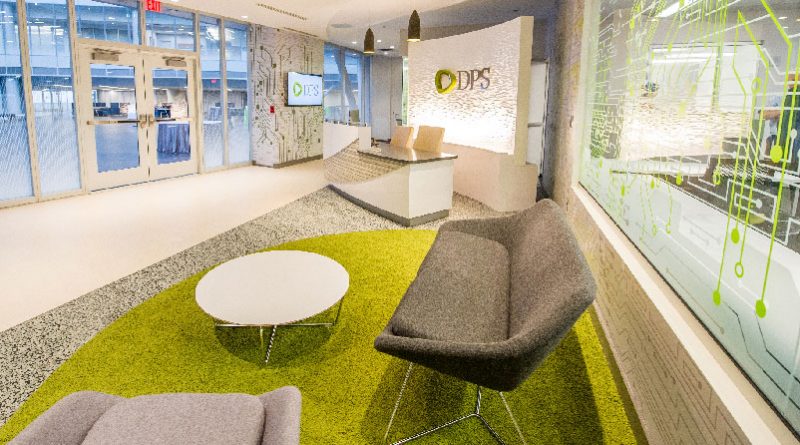Lean Construction at DPS Engineering
Richard Casey is the Ireland and European Operations Manager for DPS Engineering’s Advanced Technology Group. Richard has over 20 years of experience on Global Tool Installation Construction projects within the semiconductor industry. He has degrees in Engineering and Management, as well as a Diploma in Project Management and a Higher Diploma in Executive Coaching. Richard is also a Green Belt in Lean.
As European Operations Manager for the Advanced Technology Group, Richard’s primary responsibility is to deliver the required systems, resources and structures to enable successful projects. Richard has expertise in breaking complex requirements into achievable goals and steering people in the right direction to achieve these.
Irish building magazine spoke to Richard about his Lean Construction Ireland (LCI) webinar on ‘Direct Observation – Increasing productivity by eliminating interrupts to Trades’, as well as on Lean practices at DPS Engineering.
Richard, you have over 20 years’ experience in industry, what changes and innovations to reduce waste have you noticed in recent years?
Having spent my first 16 years in industry on the manufacturing side, I transferred to construction and noticed there were a lot of similarities between the two sectors in their processes and systems. I rapidly discovered that there was no great transfer of methods from manufacturing to construction taking place. Over the last number of years, people have started to see where improvements can be made. With the introduction of the LCI, CitA and BIMIreland.ie, there is now greater emphasis and structure on learning and improvements.
When and how did DPS begin the company’s Lean Journey?
We began a number of years ago. We really started focusing on Lean Construction in 2011. At the time, we were working for a large client and it was a client-driven request that put us on our Lean Journey. We started by implementing Lean systems and structures in our ATG business units and progressed from there.
Can you tell us about the staff structure and Lean training DPS employees have undertaken?
In 2012 we trained all of our staff in Ireland and Europe on yellow belt lean principles. We also became certified as Last Planner® practitioners for Ireland. We have green belts in our project management team and black belts in Lean within the organisation. We focused on and developed the Direct Observation process into the tactile improvement process we spoke about at the LCI webinar.
What countries have you implemented Lean in and on what types of projects?
Ireland, UK, US, and Israel – anywhere where we have a DPS operation. We have applied lean principles on energy, waste, blue chip semiconductor projects.
You did an LCI webinar last year on “Direct Observations – Increasing productivity by eliminating interruptions to trades”. Please tell us about Direct Observation and the increased productivity you have achieved with it?
 Direct Observation is a process that lets us look at the structures and processes that are used on projects. We have applied it while working with trades by identifying interruptions to their work such as identifying the best way of lifting in equipment into areas, to issues like canteen lines being too long. We look at the process and not the people. Direct Observation looks at how work is being completed, what causes issues and then determines the best way to undertake work – the ideal process. The data from Direct Observation is broken down into the 7 types of waste identified using the acronym TIMWOOD. The data is analysed, the gaps are identified and the improvements are made based on the data. We have noticed wastes such as waiting for material, waiting for drawings, people standing around waiting for instruction, materials not arriving on-site. The Direct Observation process looks at ‘Why’ and not ‘Who’. We apply the ‘5 Whys’ process, a root cause analysis to identify the true problem. We have seen a 200% improvement in productivity in some processes.
Direct Observation is a process that lets us look at the structures and processes that are used on projects. We have applied it while working with trades by identifying interruptions to their work such as identifying the best way of lifting in equipment into areas, to issues like canteen lines being too long. We look at the process and not the people. Direct Observation looks at how work is being completed, what causes issues and then determines the best way to undertake work – the ideal process. The data from Direct Observation is broken down into the 7 types of waste identified using the acronym TIMWOOD. The data is analysed, the gaps are identified and the improvements are made based on the data. We have noticed wastes such as waiting for material, waiting for drawings, people standing around waiting for instruction, materials not arriving on-site. The Direct Observation process looks at ‘Why’ and not ‘Who’. We apply the ‘5 Whys’ process, a root cause analysis to identify the true problem. We have seen a 200% improvement in productivity in some processes.
What have been the problems traditionally with interruptions to trades?
Waiting seems to be the biggest form of waste for trades. We see people waiting for resources, information, equipment and materials. This is consistently the most significant waste identified on projects. Motion is the second – how far people have to walk in order to do their job. People may be working on one end of the site, while their equipment may be located at the other end of the site. When we see these wastes we identify them, their causes and provide solutions. After these are implemented, people will begin coming to you directly to identify where they see areas for improvement.
In figures, can you tell us about the efficiencies and waste reduction you have achieved?
Our figures have shown improvements in value add of between 20% and 200%.
Please describe the process for undertaking Direct Observation?
We start off by going to the team on the ground and explaining that the Direct Observation process is not about measuring people, it’s about observing the process in order to identify interruptions and then make improvements and make their work flow easier. We spend time with the teams going through the processes. We ask the team to identify where they can see problems; we build trust and achieve buy-in. Our Direct Observation team will work with the work team for a day to look at the activity. At the end of the week we have collected the data and by analysing this, we can identify where the wastes are. Our decisions are based on quantified data, not hearsay, rumours or opinion. We implement the suggested improvements and following this we will then perform another Direct Observation exercise on the same activity, to identify the difference made. We utilise the Plan-Do-Check-Act method.
What were the challenges encountered?
The main challenge we have come across is people think we are measuring them and secondly people will always be resistant to changing the ways they have always done things. The third challenge is that people don’t believe that a change will be made as they may have highlighted these issues previously with no success. The difference is that Direct Observation is quantifiable and therefore the DO process gives the team quantifiable and measurable data. When we bring this data back to the client they are happier to make changes which leads to the building of trust in the process and then acceptance of the process.
What trades have you used Direct Observation with and what has been the feedback from trades and site staff?
We have completed direct observation with 15 trades within the Irish market, and another 10 to 15 trades internationally.
The feedback has been very positive. You are effectively solving the problem for the trade. Trades are the most important people on-site. If these people were not there to do their work then nothing would get done. If you improve the work of these people, the results and feedback is positive. We and the Direct Observation system give a voice to people doing the work on-site. It makes people less frustrated; it makes them more motivated to do their work.
What countries have you applied Direct Observation in?
Ireland, Israel, the USA, and we have just kicked off a project in the UK at present.
What is your advice to contractors interested in Lean, and specifically the Direct Observation method?
Watch our webinar and understand what Direct Observation is. Then I would say get some formal training in it. It is a process, anyone can do it but they have to learn to do it the right way. Get some experience and start small. Pick one or two activities, get a Direct Observation team to do analysis on it. It is one of the least capital cost outlays that you will need to do with the biggest ROI.
[rev_slider Surety]
What have clients said about your Lean practices?
Clients are impressed. They think it is unusual how committed we are to continuous improvement. One of DPS’s core values is continuous improvement. You need to have a process and a structure for continuous improvement and the structure we have is Lean.
Our promise is to provide a service to our clients that is rooted in Lean principles and to drive our activities in such a way as to ruthlessly pursue waste and eliminate unnecessary project costs every day. We strive to provide our clients with right first time quality in the shortest time at the lowest possible cost.
With our project teams holding the client at the centre of what they do, and focusing on a better way of working every day, DPS will continue to build successful partnerships with existing and future clients.
Can you please tell us about the other Lean practices and tools DPS have used on projects?
The main Lean practices we provide are Direct Observation, the Last Planner® System, and Lean training.
Lean is becoming more popular. What is driving the rise in interest in Lean in Ireland, and internationally?
Lean has always been popular in Irish manufacturing. I was involved in Lean in manufacturing companies for 16 years. Interest in Lean in construction is growing internationally. To be competitive internationally, Irish construction will have to be more efficient. We have tried to tackle waste in the construction industry over the past 15 years but we have not had a structured process. Lean can give us a structure to improve productivity and deliver value. The biggest barrier we have to get over is that we have to get people to understand that lean is not just applicable to manufacturing; it can also be applied to construction. That is the work we have to do.
Listen to Richard and Barry’s webinar on Lean, we recommend you see the Lean Construction Ireland website: http://tinyurl.com/zabfbom
The contents of this site are subject to copyright laws and may not be reproduced in any form without the prior consent of the publishers. The views expressed in articles do not necessarily represent those of the publishers.

